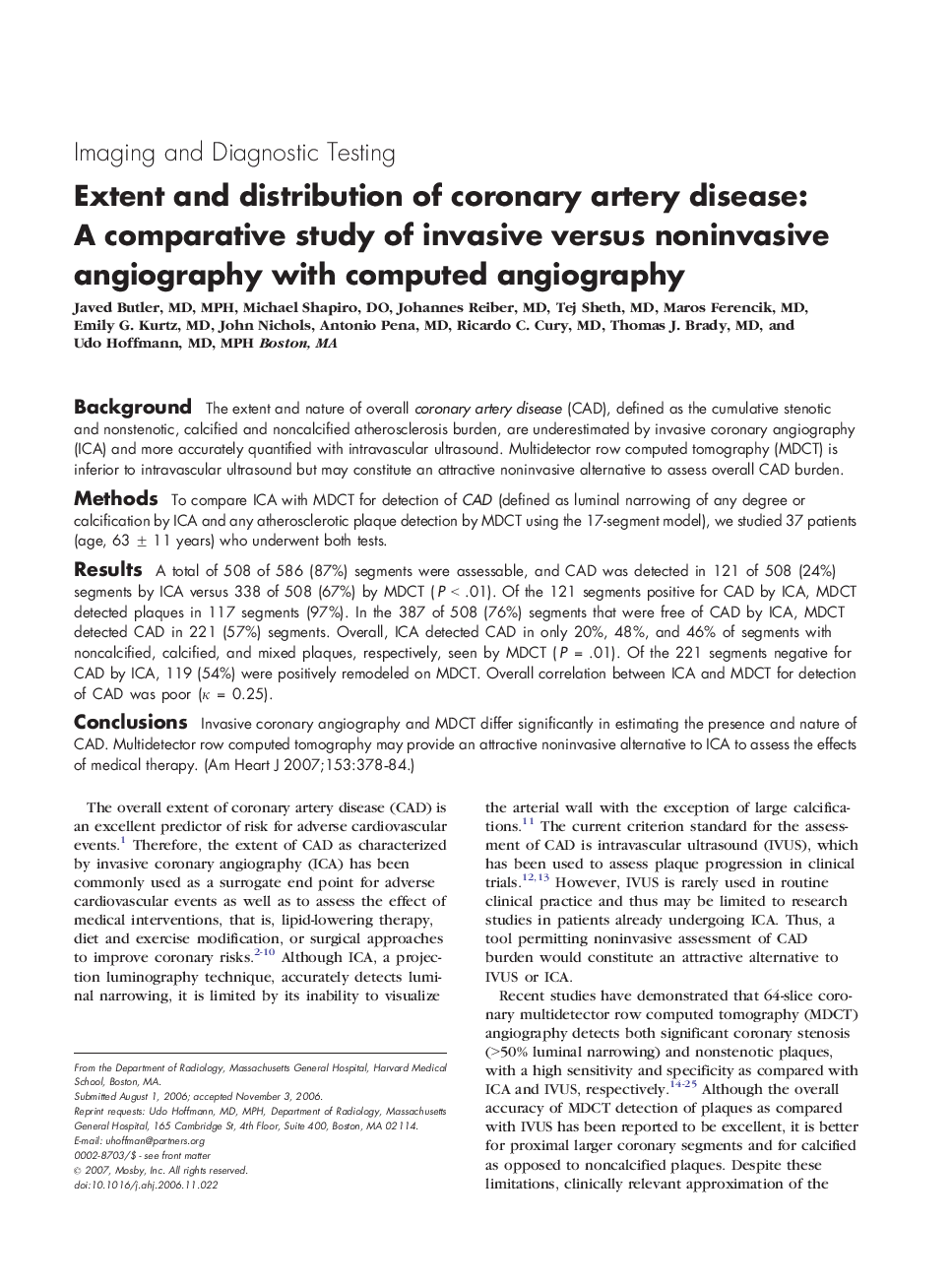| Article ID | Journal | Published Year | Pages | File Type |
|---|---|---|---|---|
| 2849238 | American Heart Journal | 2007 | 7 Pages |
BackgroundThe extent and nature of overall coronary artery disease (CAD), defined as the cumulative stenotic and nonstenotic, calcified and noncalcified atherosclerosis burden, are underestimated by invasive coronary angiography (ICA) and more accurately quantified with intravascular ultrasound. Multidetector row computed tomography (MDCT) is inferior to intravascular ultrasound but may constitute an attractive noninvasive alternative to assess overall CAD burden.MethodsTo compare ICA with MDCT for detection of CAD (defined as luminal narrowing of any degree or calcification by ICA and any atherosclerotic plaque detection by MDCT using the 17-segment model), we studied 37 patients (age, 63 ± 11 years) who underwent both tests.ResultsA total of 508 of 586 (87%) segments were assessable, and CAD was detected in 121 of 508 (24%) segments by ICA versus 338 of 508 (67%) by MDCT (P < .01). Of the 121 segments positive for CAD by ICA, MDCT detected plaques in 117 segments (97%). In the 387 of 508 (76%) segments that were free of CAD by ICA, MDCT detected CAD in 221 (57%) segments. Overall, ICA detected CAD in only 20%, 48%, and 46% of segments with noncalcified, calcified, and mixed plaques, respectively, seen by MDCT (P = .01). Of the 221 segments negative for CAD by ICA, 119 (54%) were positively remodeled on MDCT. Overall correlation between ICA and MDCT for detection of CAD was poor (κ = 0.25).ConclusionsInvasive coronary angiography and MDCT differ significantly in estimating the presence and nature of CAD. Multidetector row computed tomography may provide an attractive noninvasive alternative to ICA to assess the effects of medical therapy.
